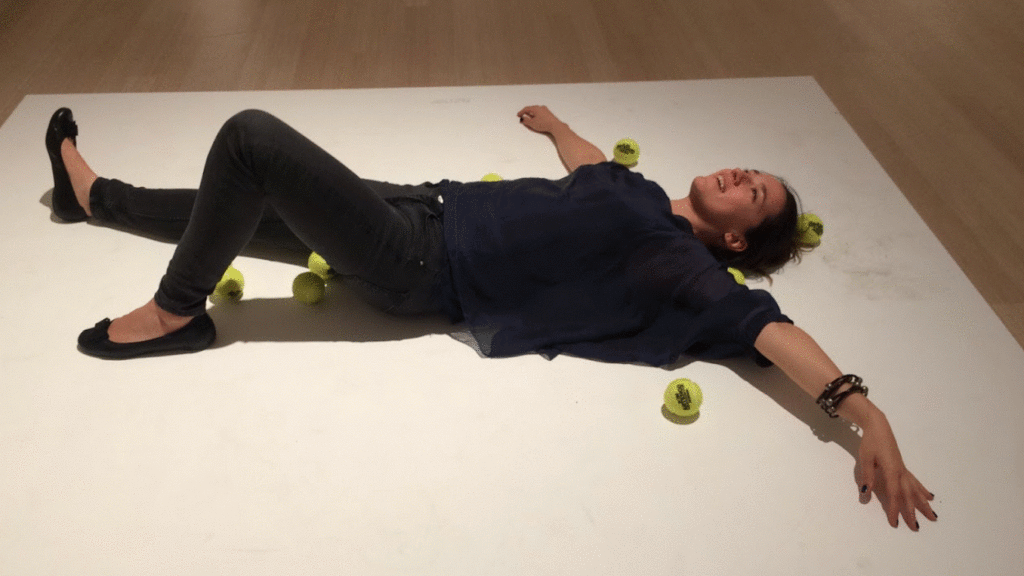How do bodies experience immersive and interactive art?
And what can we do about making that experience better – and more akin to the way message is conveyed in the actual art piece?
Virtual realities can be linked to join users in a networked environment where they navigate their “shizoid” perspectives collaboratively – not in the terrifying isolation of actual schizophrenia. (1)
We are getting opened and widened
In the Sensorium publication, the hope editor Caroline A. Jones places in contemporary art and its work on bodies and technology is almost palpable. She is drawing on the fact that the specific usage of technology has an ability to re-configure us and our ways of thinking (the use of a computational term is on purpose). It is as if we are given a unique opportunity to find our “self” in many new ways because our senses can be so extended, challenged and shown as data or images or something else.
The space in which we experience
More often than not, while setting up an exhibition there is no (planned) time to think how the art work communicates with the audience, and how they will physically and contemplatively experience the works. The focus is usually on what to show and how to show it (in terms of the artwork’s own setup).
Recently I had an opportunity to immerse in the Demon Brain by Agnieszka Polska in the Hamburger Bahnhof in Berlin. Note that I did not just ‘visit’ the exhibition but actually dove into it and stayed within it for nearly a half an hour (only a few minutes are enough for a simple “viewing”). Aside from the amazing hall-like space, the size of the video screens and the amazing audio, there was an important piece of the inventory present – the sponge beds on the ground positioned in a way that makes it easy for you to lay down. The moment you are not standing or walking, but literally relaxing into the sensory experience, the immersion can take place. The suspension of the usual movements of the body, and the common “gallery behavior” opens up an important opportunity for the work to envelop you completely.
Does your body movement matter in experiencing artworks?
In his talk “But, Doesn’t the Body Matter”, Olafur Eliasson raises a question of movement within a gallery or a museum. Observing that museums are usually restricting our movements and not even considering an opportunity that our muscle activity and spatial behavior can be a “coproducing element” we include in our experience of the artwork. He observed the movements of the audience while his work “Weather Project” with its fake sun and somnambulatory, mirroring space was at Tate-
Almost unanimously people went in, started walking on the ramp leading to the hall, and were kind of disembodied, re-embodied…In the process of being discombobulated, almost physically, you are looking for yourself. It’s a very productive combination. (2)
This is exactly what happened to me when engaging with the works of Ervin Wurm in the Ludvig Museum in July 2018.

In the case of immersive art installations and other artworks, the surrounding space, the interior design in which it is placed can be detrimental to how we far we can get into the artwork. Thinking and planning for this enable curators and artists to open this new frontier of the public space to be re-configured to “host”(3), inspire and invite people to experience the immersive pieces on a more complete, deeper level .
References
(1) Caroline, Jones A. (editor) Sensorium. Embodied Experience, Technology and Contemporary Art (2006), First MIT Press Edition, Massachusetts Institute of Technology, List Visual Arts Center
(2), (3) Birnbaum, D, Kuo, M. editors, (2018), More Than Real – Art in the Digital Age, essay by Eliasson, O. But Doesn’t The Body Matter, Koenig Books, London
Cover image and video by ketworks.com from the Demon Brain exhibition by Agnieszka Polska in the Hamburger Bahnhof in Berlin, February 2019